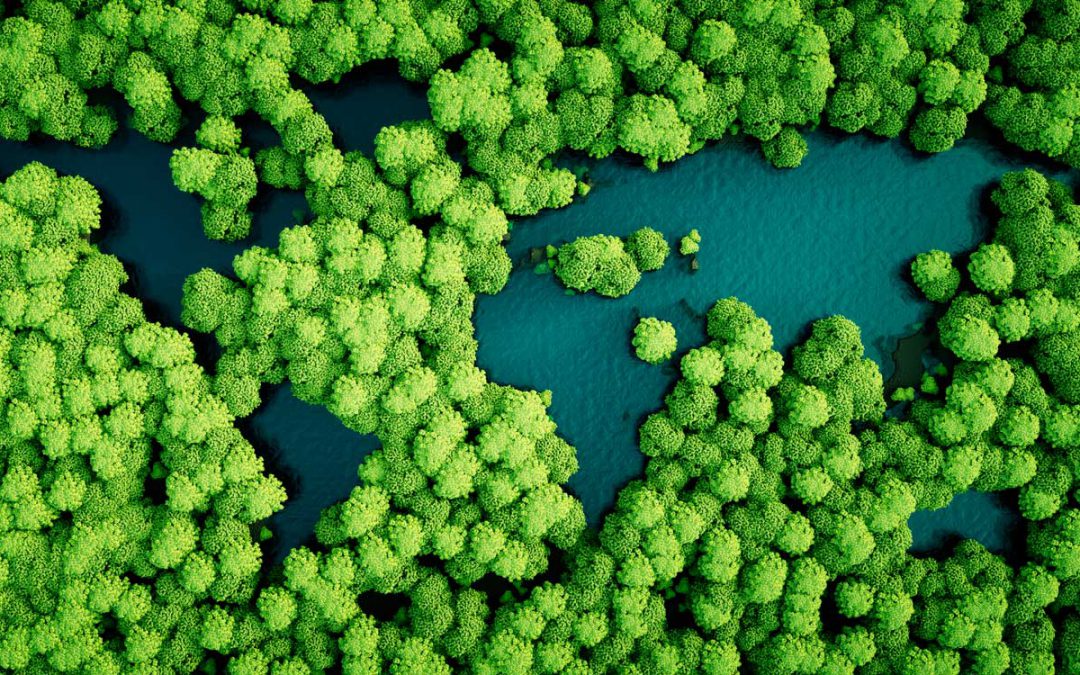Brazil’s Amazon: The Shrinking Tropical Forest
For humans and many of the earth’s inhabitants, everyday life happens inland. We play, live, eat, and build our homes in the land that surrounds us. Without land, forests and ecosystems, life on earth would be more challenging for us.
For hundreds of years, humans have learned how to co-exist and take the necessary resources needed to sustain life from the land they live in. However, in the last few decades, our rapid growth and expansion have threatened many land ecosystems and have endangered many living plants and animals. We need to do better because there is no planet B. Earth is our home, and we need to be conscious of how we use and distribute the available natural resources.
With this in mind, the United Nations have created goal 15, Life on Land, with the mission to “Protect, restore and promote sustainable use of terrestrial ecosystems, sustainably manage forests, combat desertification, and halt and reverse land degradation and halt biodiversity loss”.
To do this, the UN has proposed to work globally to end deforestation and restore degraded forests.
Deforestation
Deforestation is the permanent removal of trees, animals and vegetation to make room for something other than forest. The area is often converted to non-forest use or human-made structures.
Deforestation can involve the conversion of forest land into farms, homes, scientific, or urban use. It can also include clearing land for using the trees for fuel, construction or manufacturing.
According to The Global Forest Resources Assessment 2020 – Drax, the world has a total forest area of 4.06 billion hectares, representing 31% of the world’s total land area. However, the world has lost 178 million hectares of forest since 1990, which is an area about the size of Libya.
More than half (54%) of the world’s forests are concentrated in five countries – the Russian Federation, Brazil, Canada, the United States of America and China.
Brazil’s Amazon: The Shrinking Tropical Forest
According to the National Institute of Space and Research (INPE), 11,088 sq km (4,281 sq miles) of rainforest were destroyed from August 2019 to July 2020. This shows an increase of 9.5% from the previous year.
The Amazon has served humans for hundreds of years as a source of food shelter and by helping clear the air from CO2 emissions. The Amazon is also home to about three million species of plants and animals and one million indigenous people.
Over the past half-century, plants and soil have consistently absorbed around 30% of human-made CO2 emissions, even as those emissions increased by 50% over that period. However, this is now taking its toll, as researchers reported to the Nature Climate Change journal recently that from 2010 through 2019, Brazil’s Amazon basin gave off 16.6bn tons of CO2 while drawing down only 13.9bn tones.
The Amazon basin contains about half of the world’s tropical rainforests, which are more effective at soaking up and storing carbon than other vegetation types. However, the shrinking forest can’t cope anymore. We are growing too fast too soon while the forest is becoming smaller and weaker.
Strategies How to Reduce and Prevent Deforestation
How can you help fight the impact of deforestation? Small little changes can have a huge impact when we all work together; you can start by implementing the following strategies:
- Plant a tree or get involved in planting trees in your school, community or home.
- Use less paper; Two million trees are cut every day to supply the paper demand of the United States. Try using electronic devices instead, like an iPad or a computer, to take notes, rather than always printing on paper. Or you can try making your paper. We will share more of this below.
- Use recycled paper, cardboard, and any other recycled materials whenever possible.
- Look for the Forest Stewardship Council (FSC) certification on any wooden products. Products with this stamp come from sustainably managed forests and not from illegal logging.
- Avoid products that contain palm oil. A large amount of the world’s palm oil comes from Indonesia and Malaysia, where the virgin rainforest is being cleared at an alarming rate of 2.4 million acres a year to make way for new plantations. Read food labels to ensure the products you consume are palm oil-free. Talk with your parents or adults who make the buying decisions about the importance of avoiding ingredients that harm the environment.
- Raise awareness at home, school, church or local community about deforestation and the importance of our land ecosystems.
Sources for more info
BBC Video https://www.bbc.co.uk/news/av-embeds/55130304/vpid/p07gcvb8
Document https://www.drax.com/wp-content/uploads/2020/06/CA8753EN.pdf

Thinking Cap On
Have a look at the websites of the following international organizations that help fight deforestation around the world:
- Greenpeace
- World Wildlife Fund
- Rainforest Action Network
- Rainforest Alliance
- Conservation International
- Amazon Watch
- Arbor Day Foundation and many more.
Find out if there is a way you can get involved with any of their programs or create a video/drawing/presentation/website/social media account with your findings to help create awareness in your local community.


Recent Comments